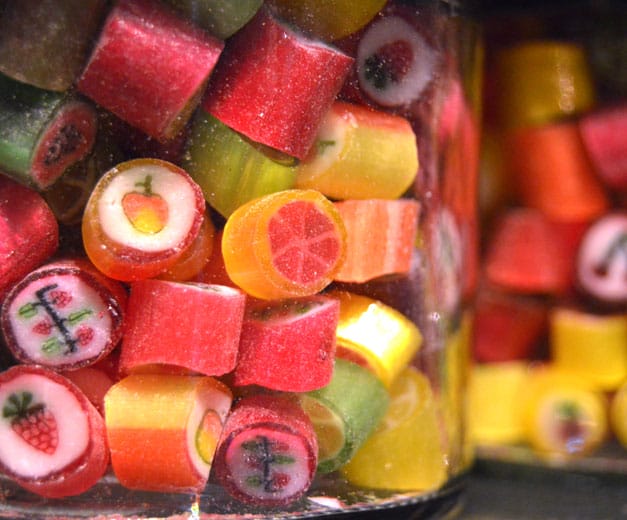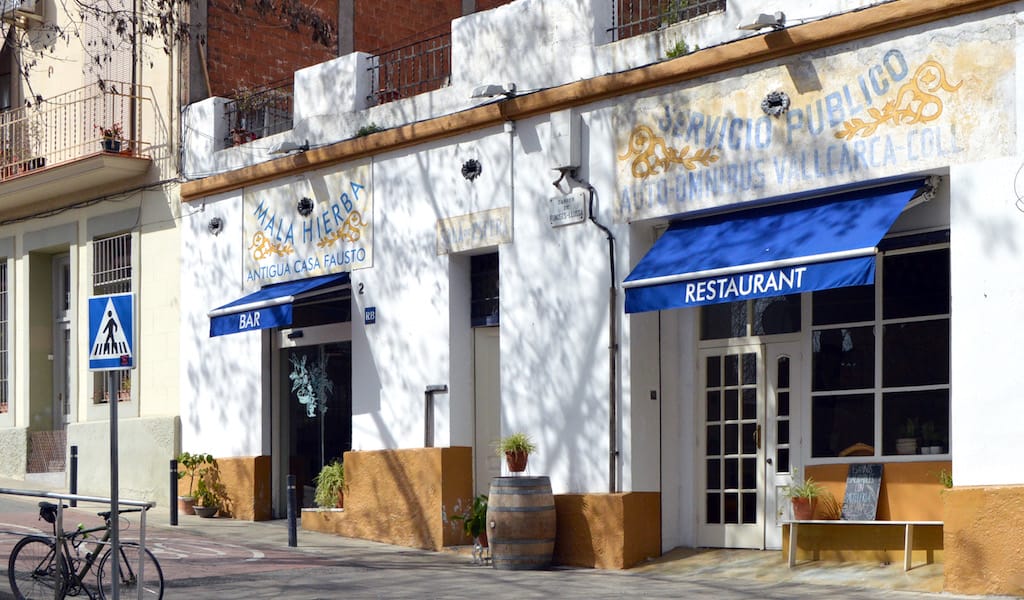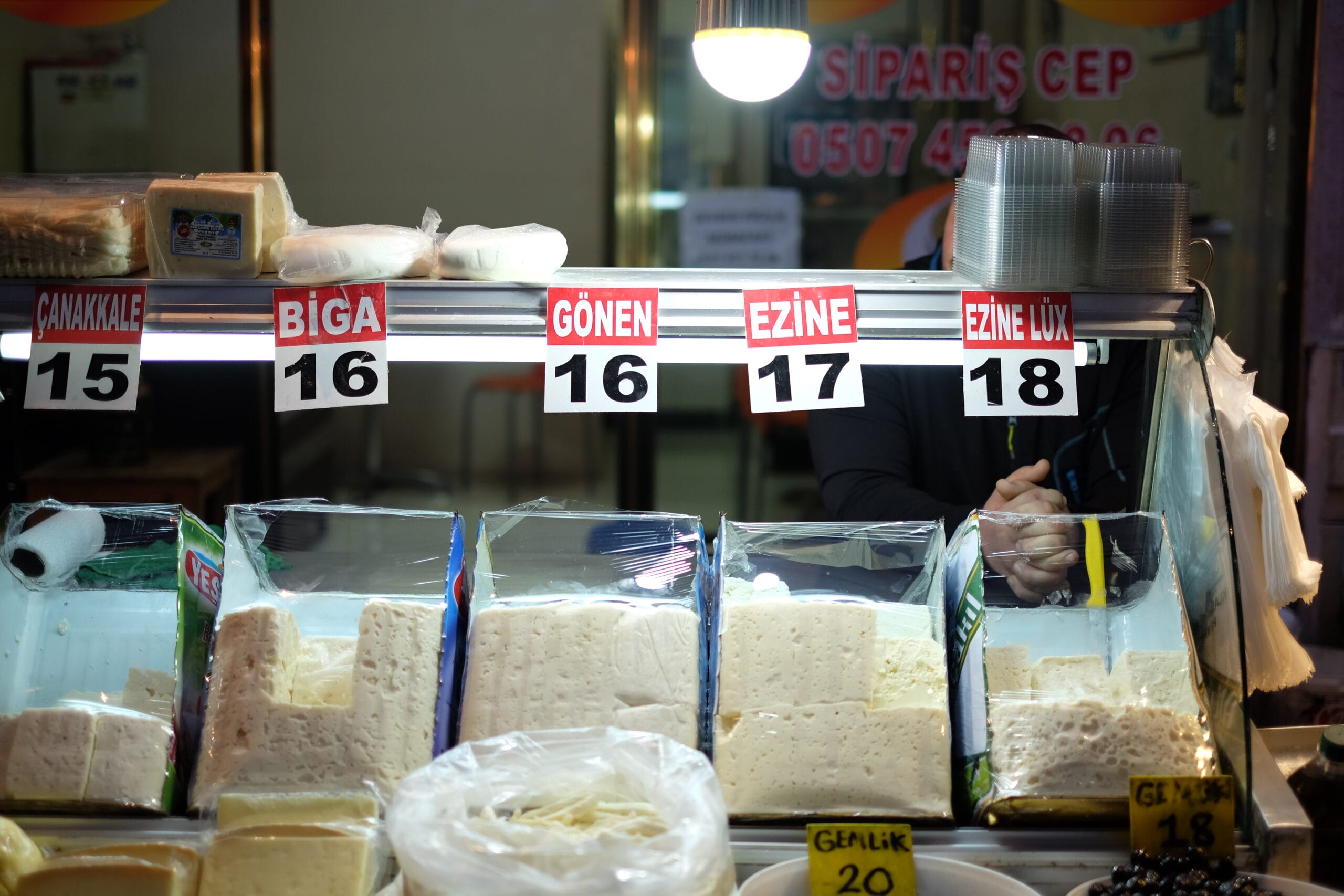Editor’s note: For the final installment in Sweets Week, we turn to Barcelona, a veritable wonderland of sugary treats, where old-fashioned hard candy is as popular as ever.
Barcelona is paradise for those with a sweet tooth. Pastries, nougats, cakes, chocolates and candies can be found in every neighborhood, all year long. We’ve written previously about turrón, artisanal gelats, chocolate and seasonal specialties such as panellets, tortells and buñuelos, but beyond of all these (and others), there are the city’s beloved hard candies.
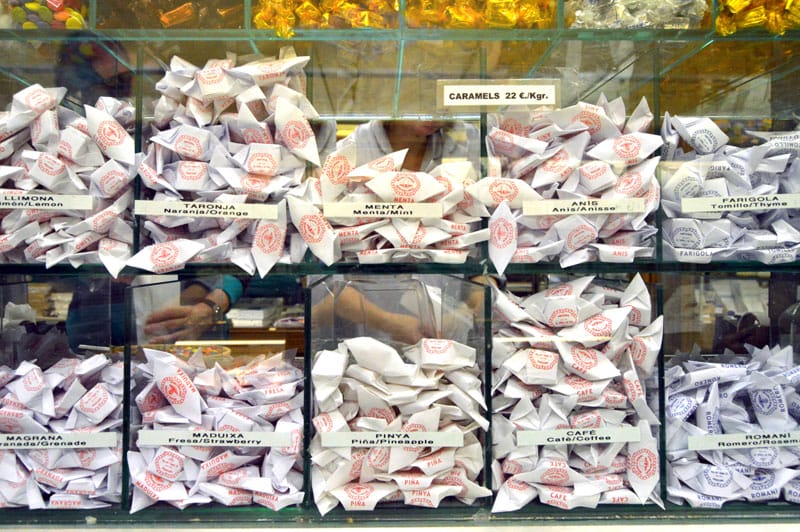
Let’s start with the eminence grise. The patisserie La Colmena (“The Hive”) has two locations, the first of which opened in 1835 on Gran de Gràcia, the second in 1849 on Plaça de Àngel. For a time, the shops were run by different branches of the same family, and eventually each went its separate way. Both shops continue to make Spain’s oldest artisanal candies, square-shaped sweets flavored with honey or Mediterranean flavors like thyme, rosemary and citrus. The original candy was made with single-varietal honey from rosemary flowers and sugar and was hugely popular in both shops’ neighborhoods. As might be expected, the two businesses share more than just genetics: All the candies in both shops are made by hand, with natural essences and without any kind of artificial flavors or preservatives. There are a few differences between the two Colmenas too.
Lourdes Nieto, wife of the owner of La Colmena in the Barrio Gótico, told us that the candies at their shop are still packaged by hand with the same paper that has always been used. She also explained how the candies are now produced at higher temperatures, which helps them keep longer, but also sacrifices a little of the flavor that can be obtained at lower temperatures. This shop offers 18 flavors, including lavender, fennel, pine, marshmallow and pomegranate.
In Gràcia, Francesc Font Mestre follows the exact same recipe created by his great-grandfather. He told us that the first rosemary honey candies were prescribed by doctors to locals as throat lozenges – a use that is still popular today. In addition to the classic rosemary, he makes such flavors as balsamic mint, eucalyptus, vanilla and coffee.
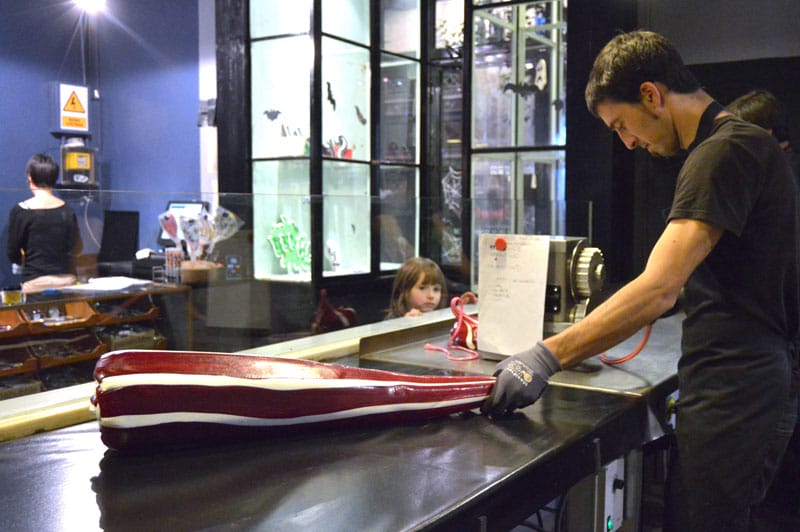
One of Barcelona’s more recent success stories on the sweets front is Papabubble. Two Australians opened the original shop in 2004 in the Barrio Gótico. Papabubble’s great draw is not just the high quality and eye-catching shapes and colors of the candies, but also the spectacle of the candy-making itself: Customers can watch workers stretch and twist brightly hued ropes of sugar to order. In 2008, Alejandro Siniawski, a former candy executive, bought the small shop and has since expanded with Papabubbles all over the world. Throughout it all, he has maintained the company’s original concept. The sweets are still carefully handmade in front of customers, infused with delicious natural flavors and can even be personalized for their recipient.
Among the newest entrants to Barcelona’s candy scene is Çukor. Much more than just a sweets shop, Çukor was opened by Jabier Poveda (chocolatier), Péter Sándor Nagy (candy specialist) and Emmanuel Abraham (artisan), as a pop-up with a cooking workshop for kids and adults that is located, at the moment, in Gràcia. Their chocolates and candies are handmade in an open workroom using completely natural ingredients and are the product of constant experimentation. The partners’ craftsmanship can be felt everywhere in the space; they made every single thing there – even the furniture.
Published on November 21, 2014
Related stories
April 22, 2013
Mexico CityMexican dishes are known for their bold flavor combinations, from complex mole sauces that incorporate ingredients as diverse as chilies and dark chocolate to the multiple different food items and seasonings that go into an authentic pozole. But an equally key element in Mexican food culture is that most basic of flavorings: salt. From savory…
March 28, 2018
BarcelonaUp in Barcelona’s hills, in the El Coll neighborhood, where the city ends and the sky is cut by the spiky shapes of the pine trees in Collserola Park, Agreste de Fabio & Roser – formerly known as Mala Hierba, or "bad weed" – is sprouting up. Emphasizing sustainability and healthy eating, the restaurant is…
May 6, 2016
IstanbulIstanbul's Samatya neighborhood is home to one of the city's many sprawling weekly markets, where one can find excellent Ezine, a white cheese from a district of the same name in Çanakkale, at modest prices.







































